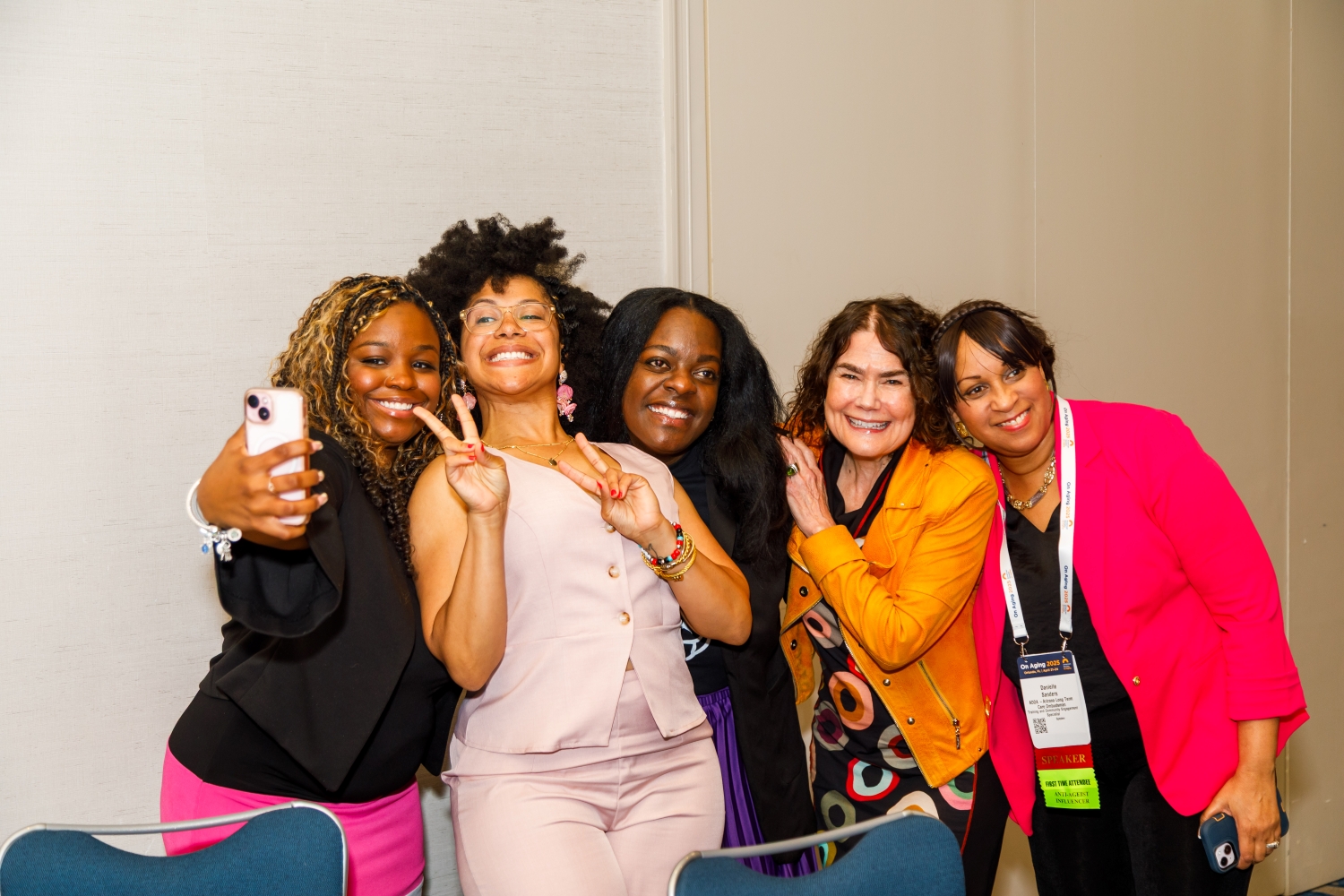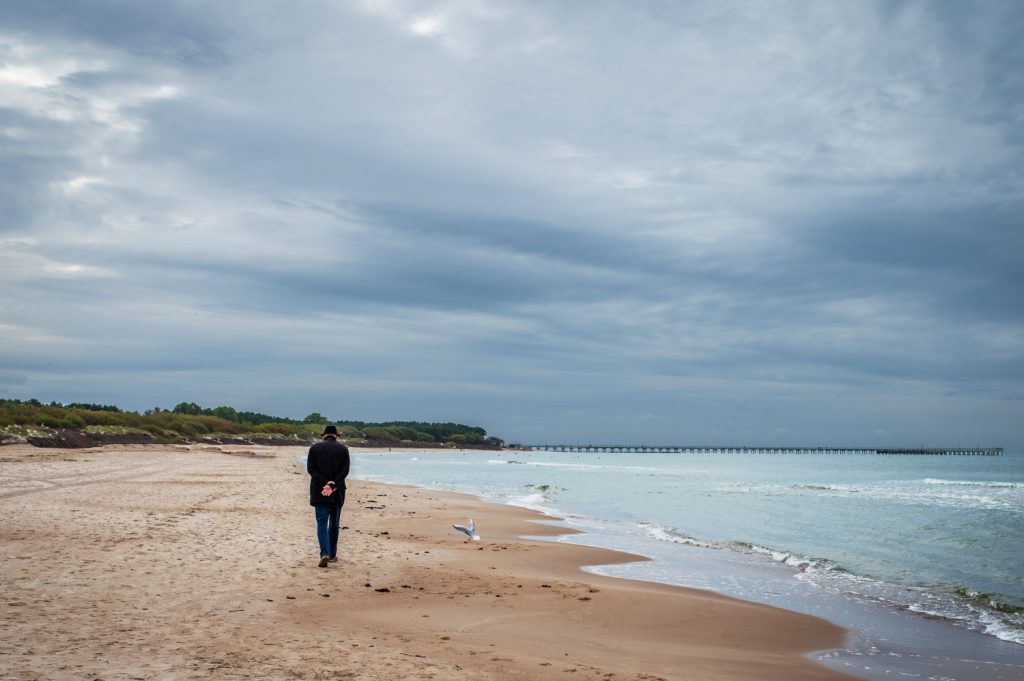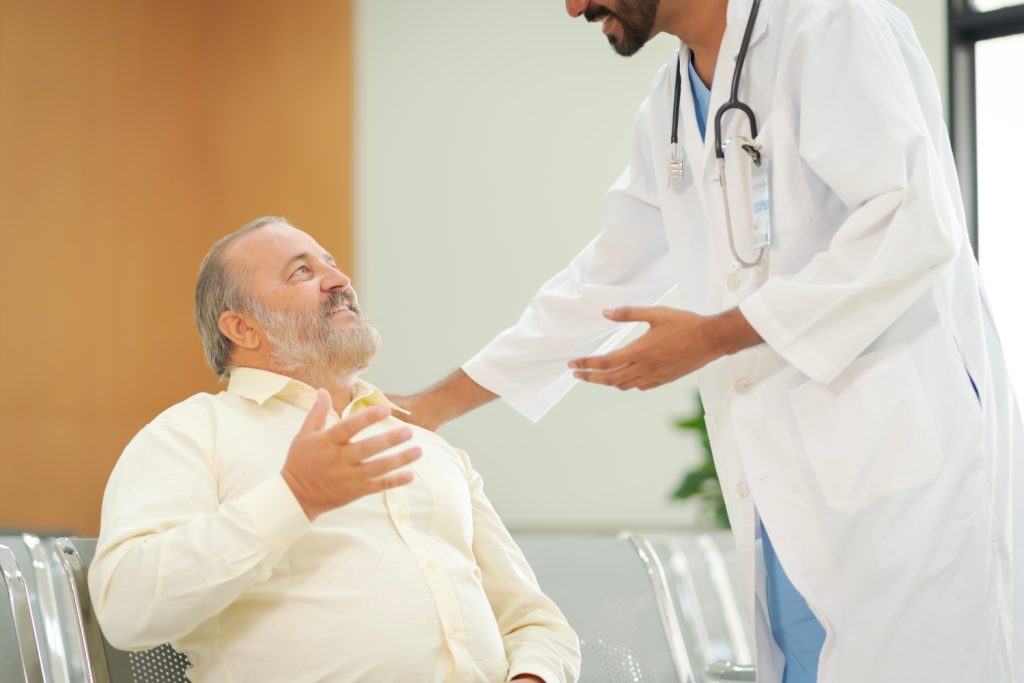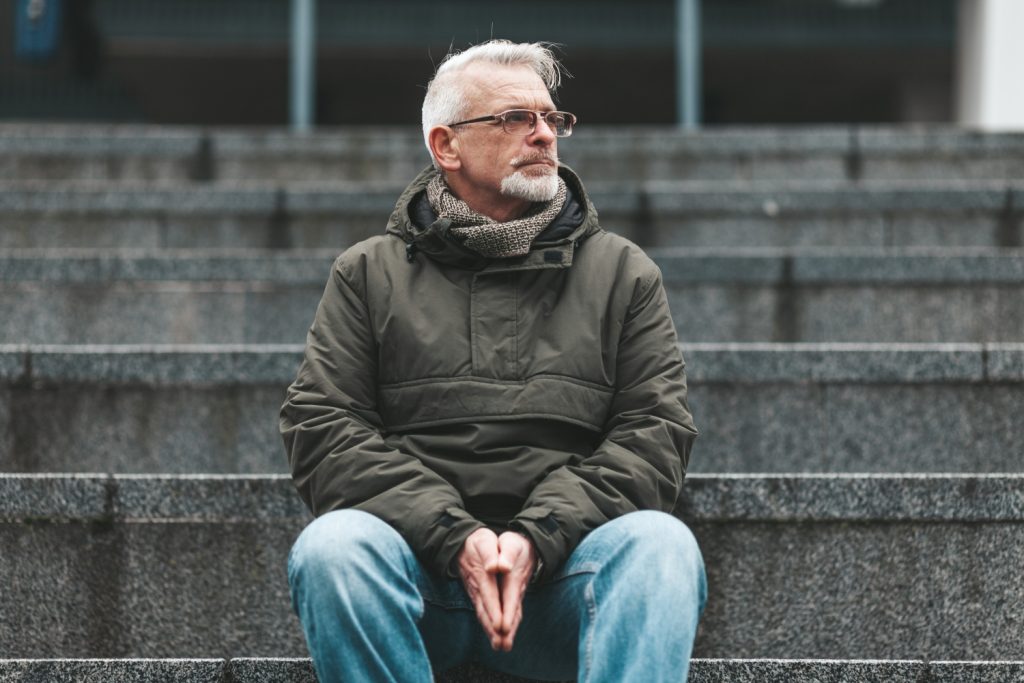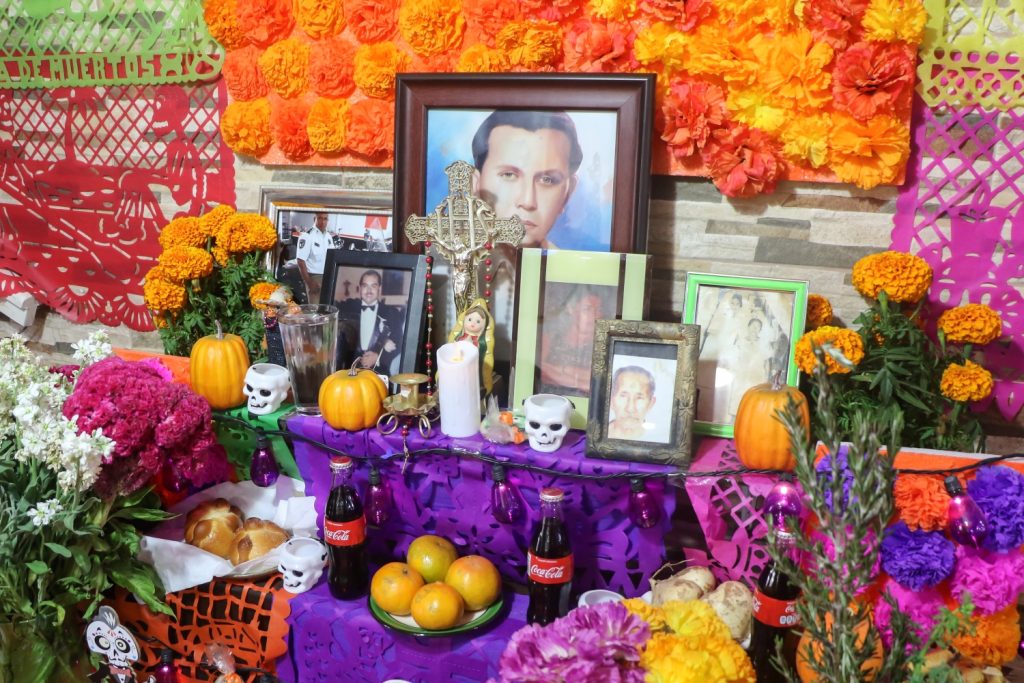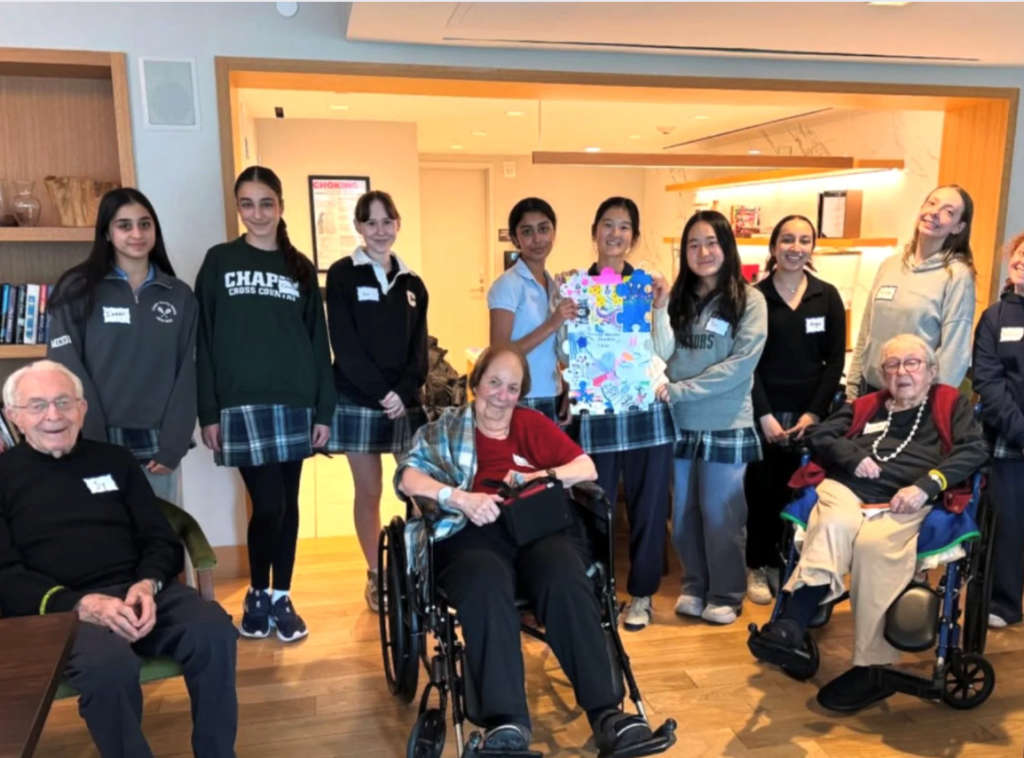Editor’s Note: The John A. Hartford Foundation is collaborating with ASA to advance equity in aging by supporting ASA RISE, a 20-week social justice and leadership program for rising leaders of color in aging, and via the development and dissemination of equity-related, partnership-based thought leadership through ASA’s Generations platform. This blog post is part of that series.
It took me years to finally realize that I belong in the field of aging, and that my voice deserves to be at the table when major conversations and decisions are made. Why? Well, I had rarely seen Black representation in those spaces, and didn’t know it was possible until I had the courage to claim it for myself.
Today, I’m honored to be part of the Old School Hub and to serve as an educator at Virginia Commonwealth University, two roles that came together during my participation as a researcher for the Expanding Age Advocacy guide. The goal of the guide is to bridge the gap between awareness and action, by explaining why creating a world where aging is no longer a privilege but a right, requires equity across the lifespan. My involvement in this meaningful work is deeply rooted in my ASA RISE experience, which shaped the lens I brought to the project.
One lesson from ASA RISE stands out immediately: equity requires insight and eyesight. It’s important that we know who we are when entering any setting, whether it’s healthcare, education or the workplace. We bring our culture, beliefs, privileges and biases with us, and that’s our insight. The flipside is our eyesight, which reflects how we engage with and truly see the people with whom we’re working. Those two perspectives have stayed with me ever since RISE and were applied to the Expanding Age Advocacy guide.
Hearing People, Not Just Data
My role involved reading through focus group transcripts and helping to identify themes and create codes for them. It might sound simple on the surface, but it demanded a lot of intentionality. Every time I read someone’s words, I had to pause and ask myself: “Am I interpreting this through my own lens, or am I really hearing what’s being said?”My RISE experience showed up most during this process, which came in handy when we ran into barriers.
One of the biggest barriers our team faced was ensuring we captured participants’ perspectives accurately and didn’t insert our own assumptions. It’s easy to say you’re “listening,” but equity asks us to listen deeply. After reviewing the transcripts and identifying key themes, we reached back out to participants to ask, “Did we get this right? Is this what you said?” That small act, asking for clarification, is one of the key ways to establish trust when working with others.
‘We have to be intentional, to make note of the equity gaps, and to work collectively to fill them.’
We even took it a step further by including direct quotes from participants throughout the guide. That was intentional. It was our way of saying, “We see you, we hear you, and we value what you have to say.” To me, that’s what equity looks like in practice, centering the people who shared their stories and letting their voices guide the work.
Storytelling as an Act of Equity
Storytelling is one of the most powerful ways to amplify diverse voices, and it was highlighted in the Expanding Age Advocacy guide as a key strategy. It’s a way of practicing equity, and centering those most impacted by inequities. For researchers, it’s a constant reminder—our job isn’t to speak for people, it’s to create the conditions where they can speak for themselves.
During RISE, we practiced that through interviews with older adults, asking them about their health, communication with providers, and what good health meant to them. Hearing those stories firsthand helped me see how storytelling can shift the narrative. It moves us from “data about people” to “stories with people.” Too often we lead with assumptions about people’s needs and rarely take the time to hear from them. RISE challenged me to change that, and I believe highlighting this as a strategy in the Expanding Age Advocacy guide is our way of encouraging others to do the same.
Scaling Equity Beyond Inspiration
If there’s one thing I’ve learned from RISE and this age advocacy research, it’s that we have to move beyond just talking about what needs to be done. It’s easy to be inspired and have conversations, but when it comes to rolling up our sleeves, it gets uncomfortable and we may feel like we want to drop out. Instead we have to be intentional, to make note of the equity gaps, and to work collectively to fill them.
Scaling equity means creating structures that make collaboration sustainable. That looks like funding spaces where researchers, advocates and communities can meet regularly (not just during projects) and share what works in real, practical ways. I’ve seen that kind of ongoing commitment through organizations like the American Society on Aging, Aging While Black, and the Old School Hub. They’re keeping the work alive. Equity grows when it’s shared, practiced, and seen in motion, not when it’s tucked away in a report or confined to a meeting room.
Final Reflection
RISE taught me three things: to lead with courage, to trust that I am valuable, and to know that I belong in this space. Those lessons were reaffirmed through the opportunity to work alongside incredible team leaders on this project. I’ve learned to always ask the question: “Whose voice needs to be centered here?” That’s the equity lens I brought to the Expanding Age Advocacy guide—one shaped by insight, strengthened by collaboration, and grounded in the belief that everyone deserves to be seen, heard, and valued in the aging conversation.
Christina Peoples, MS, is a gerontologist who started the platform Gero-What?! as an educational resource, providing insights to individuals seeking knowledge about aging.
Photo caption: From left to right: Ilonka Walker, Christina Peoples, Ashley Stevens, Donna Butts and Danille Sanders at the 2025 On Aging conference.
Want to receive the latest Generations articles and other updates from ASA right to your inbox? Subscribe to our newsletter.
Subscribe to our newsletter. linked to https://asaging.org/subscribe/

